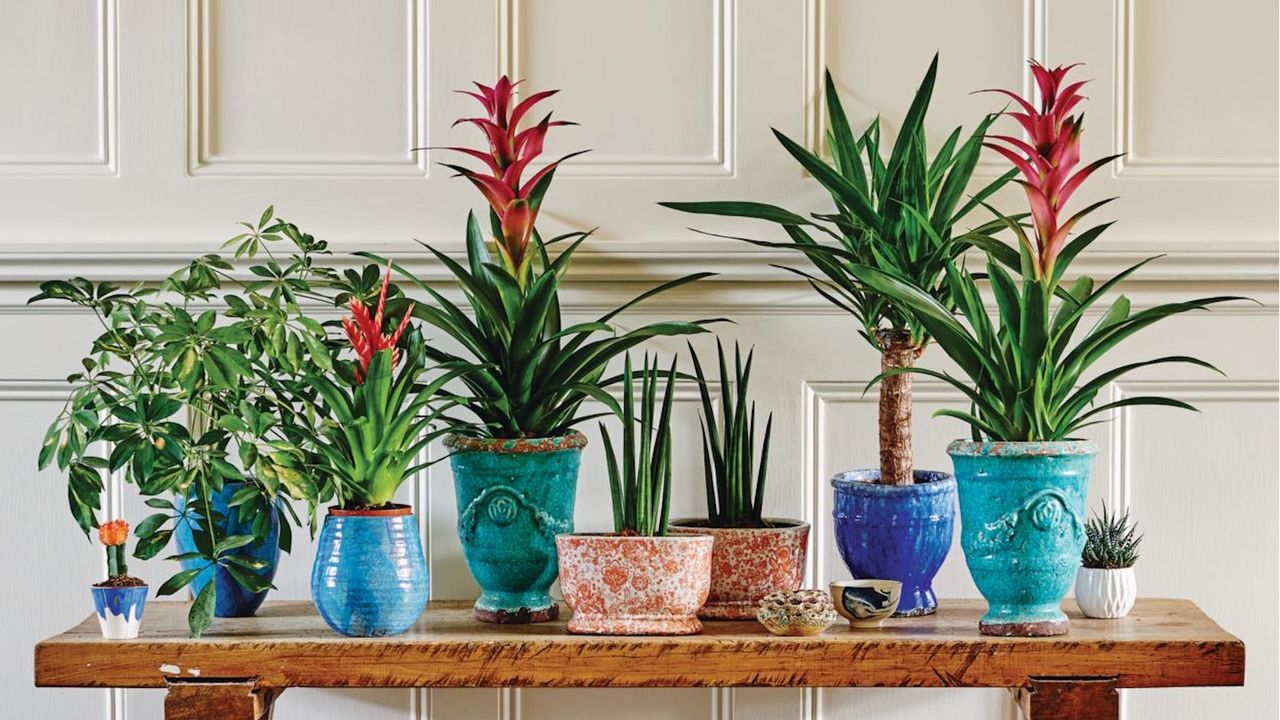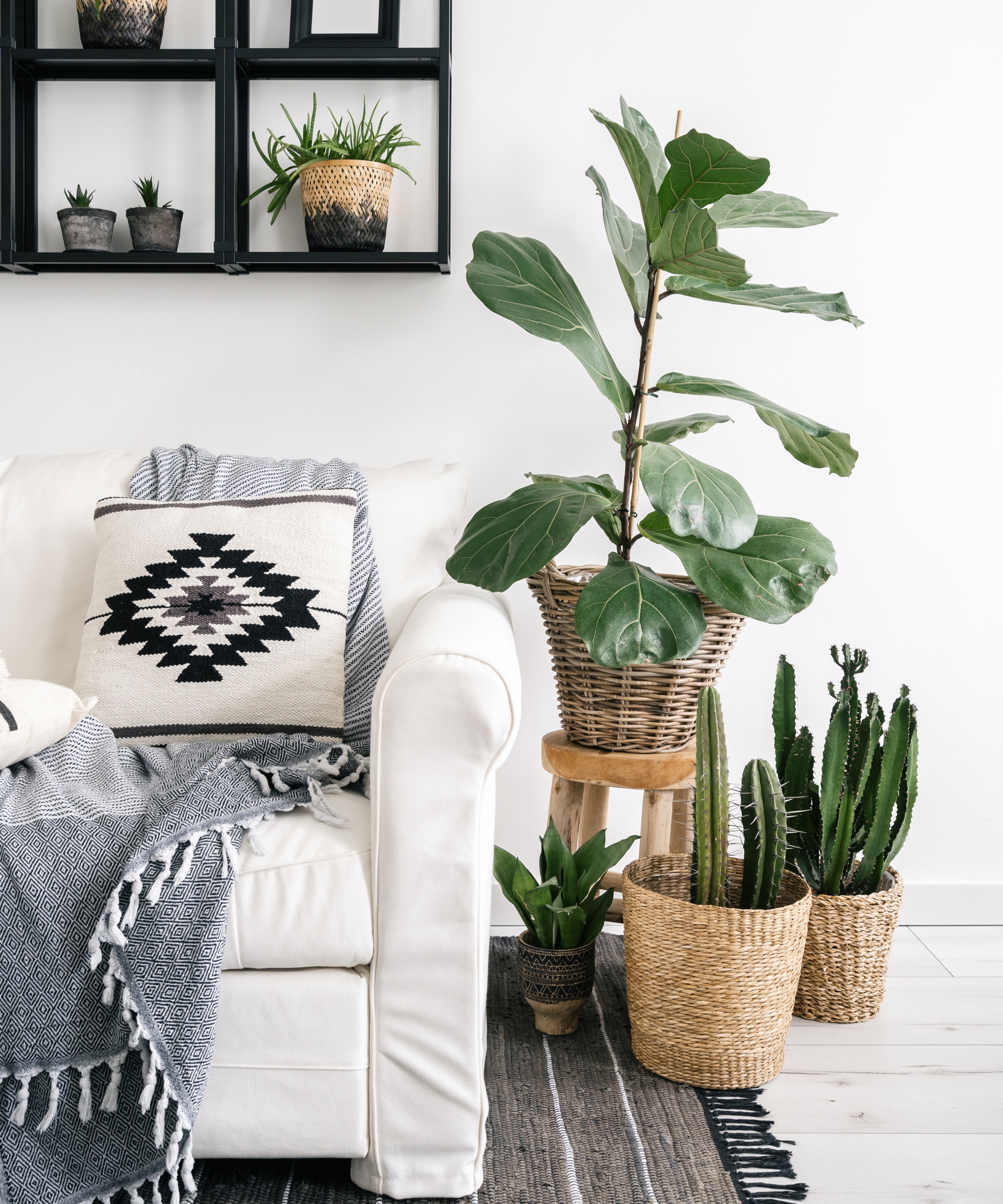
Even though I'm a dedicated plant parent to my ever-growing collection of houseplants, I'm the first to admit I make mistakes along the way. Not properly understanding watering, for example, has led me to find mold on the surface of my houseplant soil.
More specifically, before I knew much about whether you should water houseplants from the top or bottom, I would frequently pour water on the top of my houseplants. As a result, I was overwatering my plants, providing the perfect environment for mold to build up. But, ever since switching up my regime by bottom watering my houseplants, I haven't spotted any mold – and it keeps pests away, too.
So, if you're new to watering houseplants, or can't seem to stop mold building up on your houseplant soil, maybe you just need to try bottom watering. Here's why it's the only watering technique I now use.
What is the bottom watering technique?

Bottom watering is exactly what it sounds like. It's simply watering houseplants at root level, rather than surface level.
I find the easiest way to bottom water is by having planters with drainage holes and saucers - like this sage green planter with saucer from Amazon. I then use a narrow spout houseplant watering can (from Amazon) to pour water into the saucer, where the plant roots soak it up through the drainage hole.
However, before using this technique, I had already purchased many planters without drainage holes. In some cases I have been able to add drainage holes to planters, but this isn't always possible to do (like with solid ceramic pots).
My top tip in this case is to gently lift your plant out of its pot and soak it in a sink or container full of water. Although a slightly different technique to bottom watering, this method uses the same logic and will give your houseplant a deep watering from roots up, rather than surface down.
Why does bottom watering prevent mold?

Before I used bottom watering houseplants to prevent mold, I would just water houseplants from the top. The problem with this is you can't tell if you have provided enough water, resulting in the common indoor plant mistake of overwatering.
Not only does this leave your soil oversaturated, but it also means your soil isn't likely to have dried sufficiently before you top up with more water. That's why I now check my houseplant soil every time before watering again, using this soil moisture meter from Amazon.
This overly wet environment is ideal for mold to grow. This is enhanced if your houseplant soil has become compacted (something that can happen from overwatering, and not aerating houseplant soil). The lack of airflow in this environment can also contribute to mold growth.
In particular, I found mold on my bathroom houseplants, which is explained by the excess humidity in this part of my home furthering a mold-happy environment.
This is where bottom watering houseplants to prevent mold comes in. This technique allowed me to only provide my houseplants with as much water as they need.
This is because you can pour water into the saucer for plants to soak up and discard the excess water they don't soak up. This step is important to ensure you don't leave your houseplants sitting in water, once again risking oversaturation, mold, root rot, and more.
Alongside checking my houseplant soil before watering, this technique keeps an optimal mold environment at bay. Plus, it has stopped houseplant root rot and discourages houseplant pests, leaving my houseplants looking the healthiest they have ever been.
FAQs
How do I get rid of mold on houseplant soil?
You can get rid of mold on houseplant soil by physically removing it, such as using a utensil to scrape it off. However, be aware that mold is likely to return if you don't adjust your watering regime and technique. If the mold problem is severe, repot your houseplant with fresh houseplant potting mix (from Amazon) and water less frequently going forward to prevent it coming back.
As well as switching to bottom watering houseplants to prevent mold, I made some other adjustments. This includes opening windows in more humid parts of my home more often to improve airflow for houseplants, and not placing houseplants so close together to reduce the amount of humidity among them.
If this issue is prominent in your houseplant collection, you may need to take more extreme action. Read our guide on how to get rid of white mold on plants for more advice.
Shop houseplant watering accessories
To avoid over or underwatering your houseplants, use this soil moisture meter to check moisture levels before watering.







